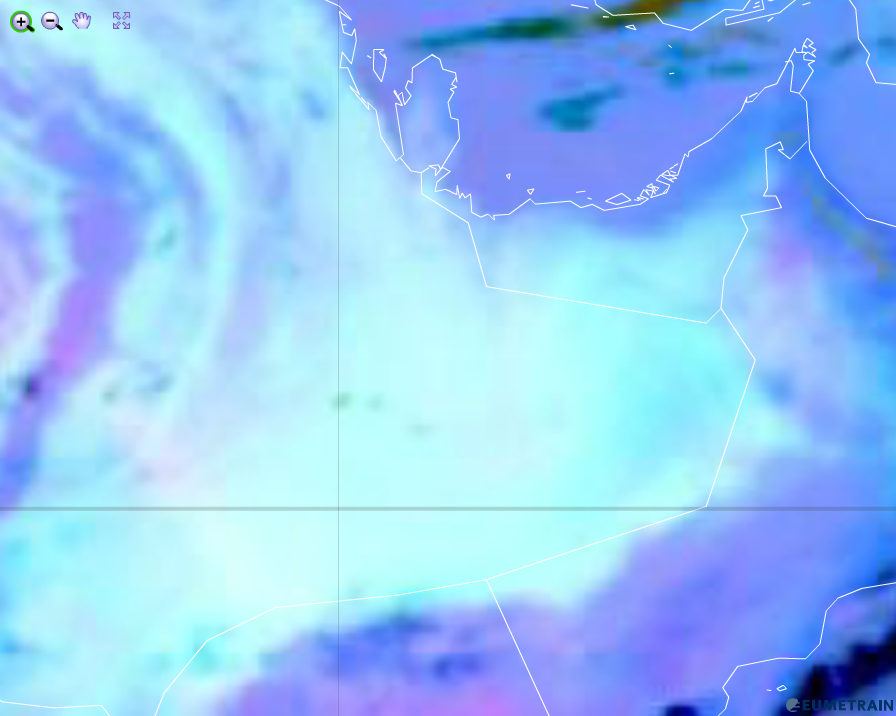Sandy deserts
Sandy and hot deserts depict in a pale cyan colour in the Dust RGB images.
All 3 colours (red, green and blue) contribute strongly when measured radiation stems from a hot sandy desert surface. The green and the blue colour prevail slightly over red (green + blue = cyan).
The red colour beam consists of the brightness temperature difference (BTD) IR12.0 - IR10.8. This difference is around zero over land. Given a temperature range from -4°C to +2°C, the red colour contribution is medium to high.
Sandy deserts have a much lower emissivity at 8.7 than at 10.8 micrometer. Therefore the BTD (IR10.8 - IR8.7) is largely positive and results in a high green contribution.
The warmer the surface, the stronger the blue colour contribution.
The Dust RGB image below shows the sandy desert in Saudi Arabia during the day. The regions with sand (pale cyan) are clearly delimitted from regions with other land types like rocks, vegetation, etc (blue).

Dust RGB from 14 February 2016, 12:00 UTC
Explanation of the pale cyan colour of sandy hot deserts in the Dust RGB (see the recipe):
• In case of a hot sandy desert, all 3 colours contribute strongly with the green and the blue colour beam (the latter depending on surface temperature) dominating slightly over the red contribution.

